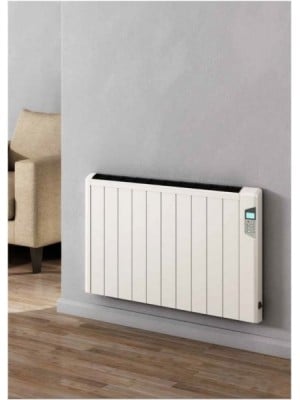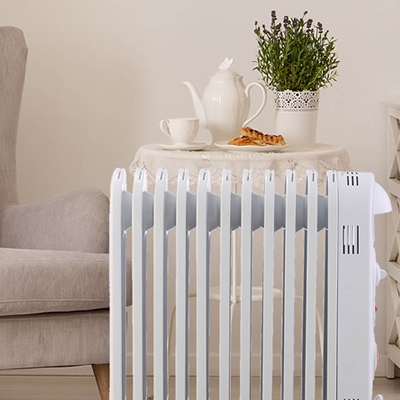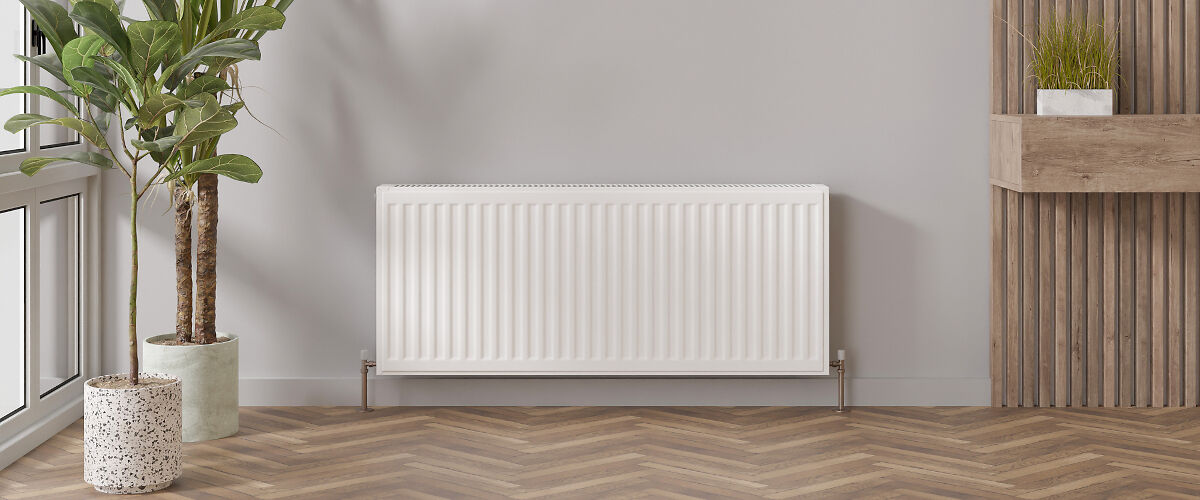
Radiators
Radiators come in many shapes and sizes. Whether you want a new central heating radiator or you want a portable oil filled radiator to help complement your existing heating, you can find it below at the best price online!
What to Look for in a New Radiator
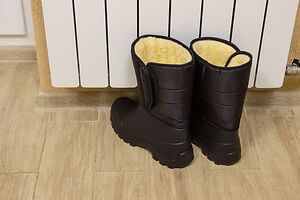 If you’re looking for a new radiator, it can seem like there is an overwhelming number of options. If you’re after a set of radiators to fit throughout your house or an office building, making the wrong choice could prove costly, so it’s important to do some research before you buy. This buyer’s guide is the best place to get started – we’ll walk you through the many different options available and help you pick out the best one for you.
If you’re looking for a new radiator, it can seem like there is an overwhelming number of options. If you’re after a set of radiators to fit throughout your house or an office building, making the wrong choice could prove costly, so it’s important to do some research before you buy. This buyer’s guide is the best place to get started – we’ll walk you through the many different options available and help you pick out the best one for you.
Water-Fed or Electric?
While there are many different types of radiator out there, they can broadly be split into two groups; water-fed (central heating) radiators and electric radiators.
Central heating radiators, as you might expect, are connected to your boiler and central heating system. Electric radiators work independently (although some can be controlled remotely – more in this later), so you can use them to either replace or complement your old central heating system. Both have their own benefits and are best for different purposes.
Central Heating Radiators
You probably know all about central heating radiators. They use hot water from your boiler and come in all shapes and sizes to suit any room. However, if you notice your heating bills creeping up every year, it’s probably a sign that your radiators are in need of an upgrade. Old radiators can be inefficient as they get blocked up by sludgy debris that can form inside the fins. Their performance can also suffer as a result of air bubbles being trapped in the fins. This happens more often in older radiators which are also much more difficult to flush out and clean properly.
Newer models are designed to be efficient and low-maintenance, so they’ll help you reduce your heating bills significantly. If you’re a landlord or a building contractor working on a project, you probably already know that having a modern central heating system is a great way to increase the value of any property, so it’s always worth keeping an eye out for ways to upgrade your heating setup.
Electric Radiators
 Upgrading your central heating isn’t always the cheapest option. Even if you’re desperate to reduce your heating bills, you might not be in a position to be able to pay to buy a set of new radiators, rip the old radiators out, and fit the new ones. If this is the case, an electric radiator could be just what you need.
Upgrading your central heating isn’t always the cheapest option. Even if you’re desperate to reduce your heating bills, you might not be in a position to be able to pay to buy a set of new radiators, rip the old radiators out, and fit the new ones. If this is the case, an electric radiator could be just what you need.
Electric models use either a heat-conducting oil or a solid heating element (usually made of aluminium or ceramic plater) which warms up when an electric current is passed through it. As they don’t need large quantities of hot water flowing through them at all times, they’re usually smaller and more lightweight – some are even portable! This means they’re great for complementing your existing central heating or – if you get a set of powerful models – replacing it entirely.
What to Look for in a Radiator
Radiators aren’t exactly the most exciting topic, but it’s worth knowing a little bit about them before you buy. Making an informed choice could end up saving you a lot of money in the long run!
Design and Size
 Looks aren’t everything, but they certainly help! A stylish and modern-looking radiator can do a lot for any décor so it’s important to pick something that looks good, especially if you plan on wall-mounting it. Generally speaking, larger heaters are usually more powerful, so getting a radiator that’s powerful enough to heat your room without being too big and bulky is an important balancing act.
Looks aren’t everything, but they certainly help! A stylish and modern-looking radiator can do a lot for any décor so it’s important to pick something that looks good, especially if you plan on wall-mounting it. Generally speaking, larger heaters are usually more powerful, so getting a radiator that’s powerful enough to heat your room without being too big and bulky is an important balancing act.
Think about the wall space you have in your room before picking up a radiator. If you’re limited, you might find a vertical radiator is a good option. Vertical radiators also have the benefit of being quite visually striking, so they look great in a stylish home!
If you have no wall space whatsoever, you might want to consider a portable oil filled radiator. These models are very small and can be wheeled around almost anywhere. This makes them ideal for places where space is tight such as sheds, garages, and caravans.
Material
Different materials conduct heat differently. A panel heater made of the most heat-conductive material will cost you less to run, but it’s also likely to cost a little more to buy, so you might need to weigh up short-term and long-term savings to find your ideal radiator.
Generally, the best materials to look out for are aluminium and ceramic. Aluminium conducts heat better than any other metal except copper (which is too heavy and expensive to be practical) while still being lightweight and durable, so aluminium housing and heating elements make for an efficient radiator. Ceramic is too fragile to be used on the exterior of a radiator, but it makes for a great internal heating element in an electric unit. It generates and stores heat incredibly efficiently, so it’ll stay warm for a long time even without power.
Heat Output
 Making sure your new radiator is powerful enough to warm up your room sounds obvious, but it’s so important that it’s worth stating here! The power you need depends on the room you want to heat. The location, size, insulation, and furnishings of a room all play a part, so you’ll want a different radiator in the bathroom than you would in an office, for example.
Making sure your new radiator is powerful enough to warm up your room sounds obvious, but it’s so important that it’s worth stating here! The power you need depends on the room you want to heat. The location, size, insulation, and furnishings of a room all play a part, so you’ll want a different radiator in the bathroom than you would in an office, for example.
You can judge a radiator’s output by looking at its BTU (British Thermal Unit) capacity. Electric radiators can also be measured by their power in W (watt). Generally speaking, a good rule of thumb is that you need 100W or 350BTU per square metre to efficiently heat your home. This can vary slightly depending on other factors, but it’s a good rough guideline.
Control
Most modern radiators feature thermostat controls which allow you to set your room temperature more precisely. These thermostats will detect when your room reaches its target temperature before shutting the radiator off. It’ll stay switched off until the room starts to cool, at which point it’ll turn back on again. Thermostat controls constantly monitor room temperature and adjust the output of your heater as required to keep it level, so you never have to waste a penny on overheating any room.
Most radiators have some form of timer control, whether on your central heating system or on the radiator unit itself. This will allow you to program your heating to make it work around your schedule.
Features
Some models come with even more features than this, such as open window detection, app control, voice control, and more. Naturally, these features do usually add to the initial cost of the heater, but they also offer you more control over your heating.
Low Surface Temperature Radiators
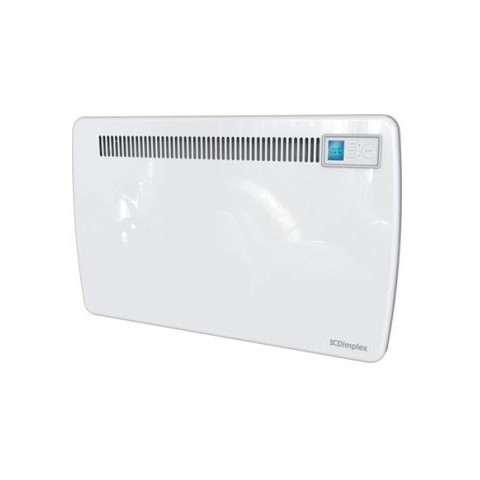 If you work in a building with children or vulnerable people, you want to keep them as safe as they possibly can. Most standard radiators can be hot to the touch, which can be dangerous in nurseries or care homes. The answer to this is the low surface temperature radiator. These specialised radiators emit heat through a grille on top of the unit and circulate it around the room without warming up the housing of the unit itself too much. This means that even if someone touches the unit while it’s switched on, they won’t be burned.
If you work in a building with children or vulnerable people, you want to keep them as safe as they possibly can. Most standard radiators can be hot to the touch, which can be dangerous in nurseries or care homes. The answer to this is the low surface temperature radiator. These specialised radiators emit heat through a grille on top of the unit and circulate it around the room without warming up the housing of the unit itself too much. This means that even if someone touches the unit while it’s switched on, they won’t be burned.



